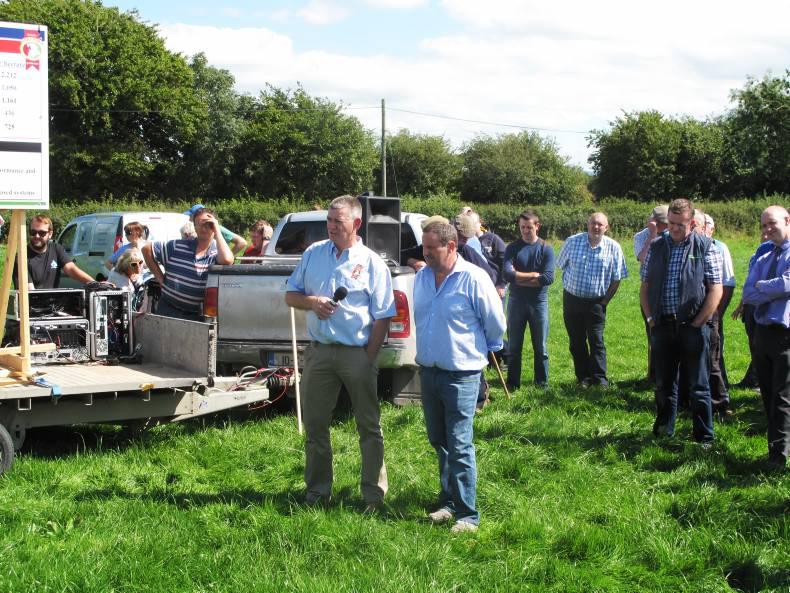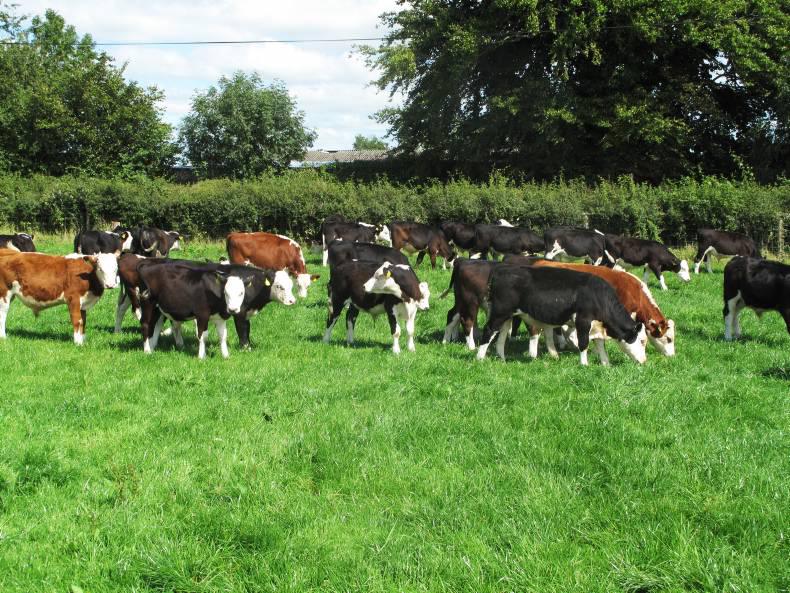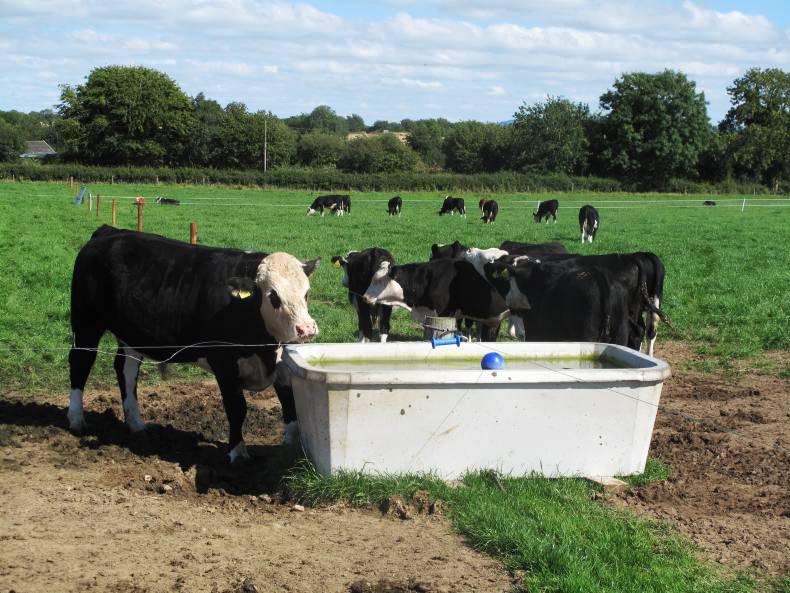Around 300 farmers attended Wednesday’s farm walk on the farm of Michael and Kathleen Flynn, Puckane, Nenagh, Co Tipperary. At the event, organised by Irish Hereford Prime in conjunction with Teagasc, farmers were told how the dairy beef enterprise was generating a net margin of €725/ha.
The foundation for the positive gross margin is the farm’s high stocking rate and impressive average carcase weight of 360kg to 370kg, from Hereford cross steers, delivering a gross output value of €2,212/ha.
Costs are kept in check on the farm through a firm focus on achieving high levels of liveweight gain from grazed grass and maximising the length of the grazing season. At €1,050/ha, variable costs are on target (under 50% of gross output value), delivering a gross margin of €1,161/ha. There are very low fixed costs on the farm, with sheds paid for. Fixed costs run at just €436/ha, leaving a healthy net margin of €725/ha.
Michael attributes the strong performance to a number of factors including:
Land type on the farm – It gives potential for a long grazing season, which Michael has always focused on maximising. This year, heifers went to grass at the end of February and bullocks at the start of March.Regular reseeding – Michael sees reseeding as central to maximising the length of the grazing season. A reseeding programme is in place, with fields reseeded on a five- to seven-year basis. Reseeding is seen as the foundation for getting stock out early in spring and being able to retain outdoors late into the year.A paddock system – A rotational grazing system has always been practised on the farm, but since suckler numbers reduced, more paddocks are being erected to divide larger fields. This helps better match grass supply to demand and maintain high-quality grass for young calves.Calf quality – The aim is to source good-quality, healthy calves direct off farms and seek to develop relationships with dairy farms. Calves purchased in 2015 averaged €371/head. This was well ahead of the previous year (€303/head). Michael puts this down to fewer calves in the market and better-quality calves on offer due to super levy fears.Teagasc adviser Robert Prendiville advised any farmer thinking of heading down a dairy calf-to-beef system to firstly establish the system he or she wants to operate. “There is no point having calves and then trying to decide what to do with them. Every farm is different, so it is not a case of one system suiting everyone,” he said.
He added that there are a number of principles or common goals that should be followed to maximise returns from the system. “Dairy beef systems generate the best returns at high stocking rates. The stocking rate should be balanced at a level that allows optimum use of grazed grass and avoids bringing excessive inputs in. The aim should be to slaughter heifers off grass at the end of the second season, with steers not going to grass for a third season (slaughtered off grass or out of the shed).
Full farm walk report in next week’s Irish Farmers Journal and at www.farmersjournal.ie
Around 300 farmers attended Wednesday’s farm walk on the farm of Michael and Kathleen Flynn, Puckane, Nenagh, Co Tipperary. At the event, organised by Irish Hereford Prime in conjunction with Teagasc, farmers were told how the dairy beef enterprise was generating a net margin of €725/ha.
The foundation for the positive gross margin is the farm’s high stocking rate and impressive average carcase weight of 360kg to 370kg, from Hereford cross steers, delivering a gross output value of €2,212/ha.
Costs are kept in check on the farm through a firm focus on achieving high levels of liveweight gain from grazed grass and maximising the length of the grazing season. At €1,050/ha, variable costs are on target (under 50% of gross output value), delivering a gross margin of €1,161/ha. There are very low fixed costs on the farm, with sheds paid for. Fixed costs run at just €436/ha, leaving a healthy net margin of €725/ha.
Michael attributes the strong performance to a number of factors including:
Land type on the farm – It gives potential for a long grazing season, which Michael has always focused on maximising. This year, heifers went to grass at the end of February and bullocks at the start of March.Regular reseeding – Michael sees reseeding as central to maximising the length of the grazing season. A reseeding programme is in place, with fields reseeded on a five- to seven-year basis. Reseeding is seen as the foundation for getting stock out early in spring and being able to retain outdoors late into the year.A paddock system – A rotational grazing system has always been practised on the farm, but since suckler numbers reduced, more paddocks are being erected to divide larger fields. This helps better match grass supply to demand and maintain high-quality grass for young calves.Calf quality – The aim is to source good-quality, healthy calves direct off farms and seek to develop relationships with dairy farms. Calves purchased in 2015 averaged €371/head. This was well ahead of the previous year (€303/head). Michael puts this down to fewer calves in the market and better-quality calves on offer due to super levy fears.Teagasc adviser Robert Prendiville advised any farmer thinking of heading down a dairy calf-to-beef system to firstly establish the system he or she wants to operate. “There is no point having calves and then trying to decide what to do with them. Every farm is different, so it is not a case of one system suiting everyone,” he said.
He added that there are a number of principles or common goals that should be followed to maximise returns from the system. “Dairy beef systems generate the best returns at high stocking rates. The stocking rate should be balanced at a level that allows optimum use of grazed grass and avoids bringing excessive inputs in. The aim should be to slaughter heifers off grass at the end of the second season, with steers not going to grass for a third season (slaughtered off grass or out of the shed).
Full farm walk report in next week’s Irish Farmers Journal and at www.farmersjournal.ie






 This is a subscriber-only article
This is a subscriber-only article

















SHARING OPTIONS: